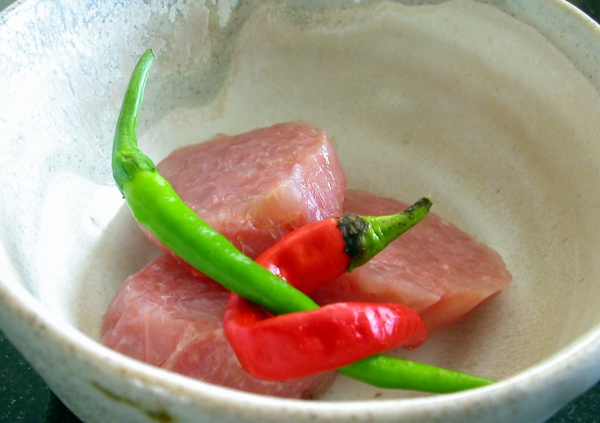Facts About Som moo
Naem is a delicious and tangy fermented pork sausage that is a staple in Vietnamese, Cambodian, Laotian, and Thai cuisine. This popular Southeast Asian delicacy has a distinct sour flavor that captivates food lovers across the region. Originating from Vietnam, Naem closely resembles Nem Chua, another Vietnamese sour sausage. Due to the spread of Vietnamese immigrants, Naem has also become a cherished dish in Cambodia, Laos, and Thailand.
Nutritionally, Naem provides approximately 185 kilocalories per 100 grams and serves as a good source of protein. It is moderate in fat and low in carbohydrates, making it a relatively balanced option. The fermentation process not only imparts Naem with its unique taste but also helps inhibit harmful bacteria like Salmonella. The lactic acid produced during fermentation acts as a natural preservative, ensuring the sausage remains safe to consume.
Naem is often enjoyed raw and is a versatile ingredient in many dishes. To make Naem, you'll need minced raw pork, pork skin, cooked sticky rice, chili peppers, garlic, sugar, salt, and potassium nitrate. These ingredients are combined, then wrapped in banana leaves or synthetic casings and left to ferment for several days. Because of its short shelf life, Naem is usually stored at room temperature.
Different regions in Southeast Asia put their own spin on Naem, resulting in unique variations that can be more sour or spicier depending on local tastes.
Some popular dishes featuring Naem include Naem fried with eggs, Naem khao, and Naem phat wun sen sai khai. It is also commonly used in salads and other dishes, adding a burst of flavor.
On the microbiological front, Naem can potentially contain parasites and harmful bacteria, but the fermentation process helps control these risks. In Thailand, there are strict regulations to ensure that sour pork products like Naem meet specific bacterial safety standards, allowing you to enjoy this delicious sausage without worry.

 Vietnam
Vietnam